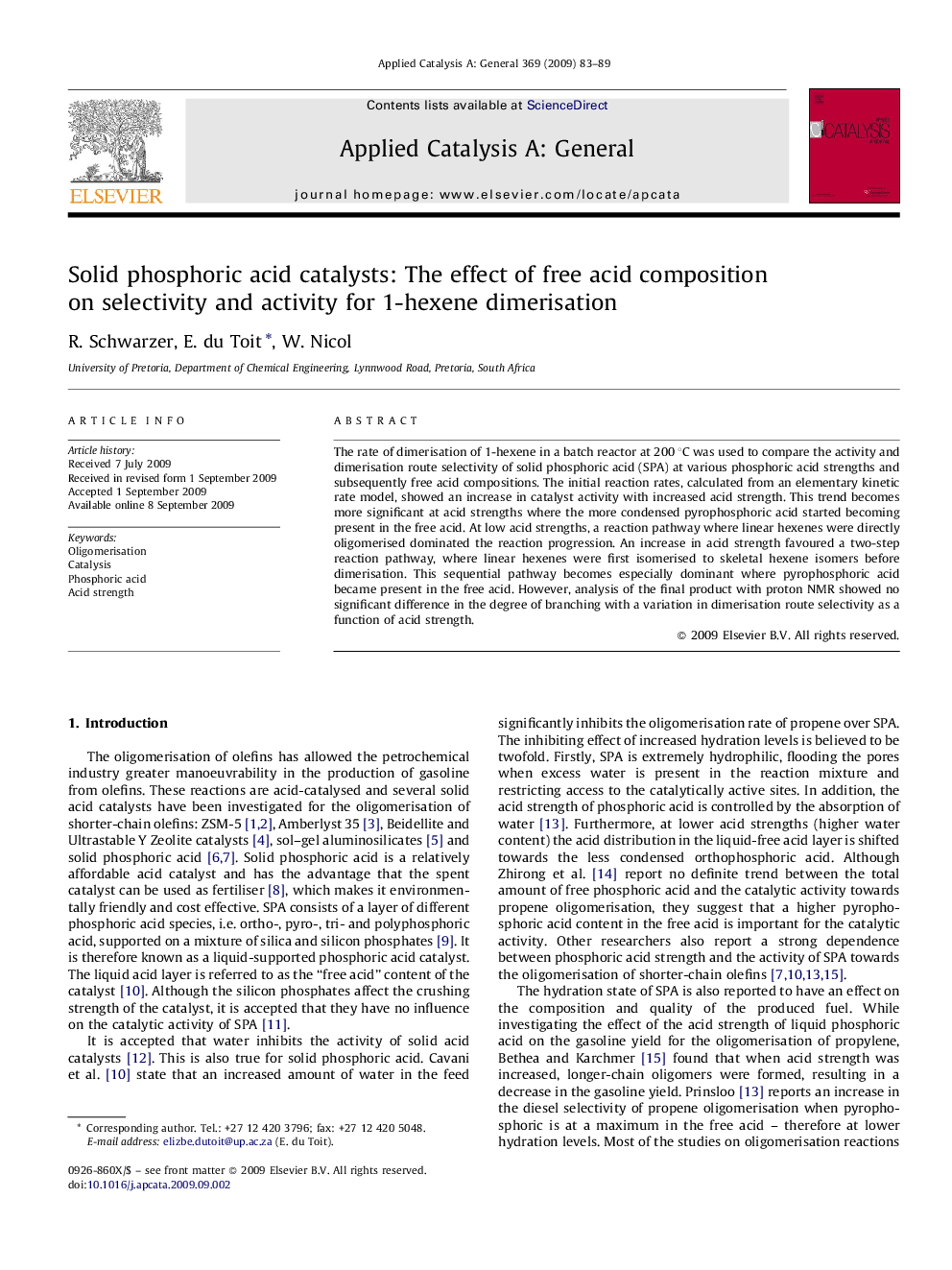| Article ID | Journal | Published Year | Pages | File Type |
|---|---|---|---|---|
| 42273 | Applied Catalysis A: General | 2009 | 7 Pages |
The rate of dimerisation of 1-hexene in a batch reactor at 200 °C was used to compare the activity and dimerisation route selectivity of solid phosphoric acid (SPA) at various phosphoric acid strengths and subsequently free acid compositions. The initial reaction rates, calculated from an elementary kinetic rate model, showed an increase in catalyst activity with increased acid strength. This trend becomes more significant at acid strengths where the more condensed pyrophosphoric acid started becoming present in the free acid. At low acid strengths, a reaction pathway where linear hexenes were directly oligomerised dominated the reaction progression. An increase in acid strength favoured a two-step reaction pathway, where linear hexenes were first isomerised to skeletal hexene isomers before dimerisation. This sequential pathway becomes especially dominant where pyrophosphoric acid became present in the free acid. However, analysis of the final product with proton NMR showed no significant difference in the degree of branching with a variation in dimerisation route selectivity as a function of acid strength.
Graphical abstractA significant increase in catalyst activity is observed at acid strengths where the more condensed pyrophosphoric acid becomes present in the free acid layer. At low acid strengths the direct dimerisation of linear hexenes occurred. A sequential reaction pathway, where linear isomerisation is followed by skeletal isomerisation before dimerisation, becomes dominant at higher acid strengths.Figure optionsDownload full-size imageDownload as PowerPoint slide
